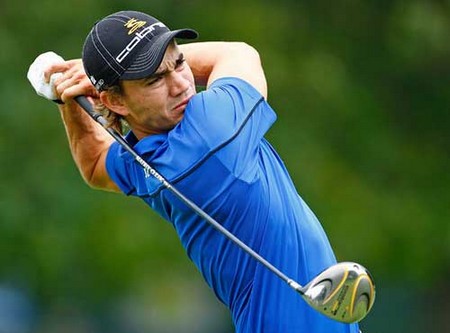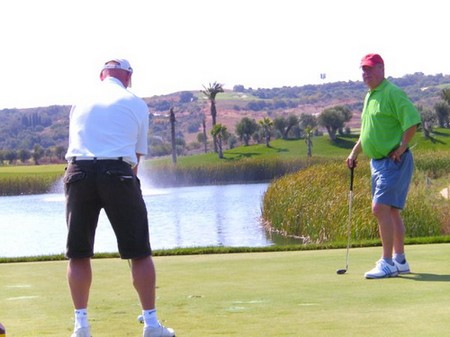If a strong wind is blowing (especially if it is against you), or there is a considerable distance between the front edge of the green and the flag, or if your ball is lying badly, striking the ball high in the air all the way to the target and landing it near the flag becomes very difficult. A lower-flighted ball with a shorter and more controlled swing will always give you a better chance of success.
Therefore, choosing a partial swing increases your chances of striking the ball well and makes it easier to achieve the correct length and line. It is important that you practice the partial swing as often as possible in order to learn how altering your choice of club and/or swing length will achieve different distances. Practice and experience will help you build up a ‘databank’ of partial shots for every occasion, and you can save many strokes by calling on the correct shot for each particular situation that arises during a game.
The choice of club
As you have decided to use less movement than the full swing, the club must be ‘strong’ enough to reach the target despite the shorter swing. However, you must also consider the fact that the position of the ball in the stance and the reduced wrist movement will create a wider arc on the backswing, thus giving you a lower trajectory and a longer roll after landing.
Experience is the only teacher that is able to help you choose the right club, so when you practice this kind of shot, try out several clubs from the same lie, noting which club produces the correct trajectory and roll. Then when you meet this situation out on the course, your choice will be easier to make.
Grip
Hold the club firmly, 2 – 3 in (50 – 75 mm) from the top, with the pressure coming from the last three fingers of both hands. The firmness of your grip will reduce the amount of wrist movement (that is, you won’t hinge your wrists too much on the backswing), thus preventing the ball from flying too high.
Stance
Because you are using a longer club, the swing will be shorter, so the feet do not need to be so far apart as they would be for the full swing movement. Keep your weight more on the left foot than on the right. The ball is just right of centre and your hands should be in front of it.
Posture
Your posture depends very much on the distance you want to hit the ball, on prevailing wind conditions, and on your choice of club. The shorter grip causes you to stand nearer the ball with just a little knee flex. Keep your weight forwards on the balls of the feet (but more on the left foot than on the right) and the hips pointed slightly left of target (which tends to keep the movement firm and prevents the backswing being too long).
Movement
Swing the club low and wide on the backswing. The firmness of the grip will ensure that the wrists bend less than usual. The half backswing will take the arms to the nine o’clock position, while the three-quarter swing will take them to the ten o’clock position. On the downswing the club is returned to the ball with the left arm pulling close to the body in order to keep the club head on an inside path and behind the hands. The swing is very controlled and the finish position on the follow through (three o’clock or two o’clock) is a copy of the backswing.
The half and three-quarter swings are identical, apart from the length of the backswing and the follow through. You must decide yourself which of these partial shots to play, as the amount of movement required is dictated by how hard and from what direction the wind is blowing, by the distance you want the ball to fly, and by your choice of club.
Categories
Advertisements
Recent Articles
 How to Understand Bed Sizes – A Small Guide
How to Understand Bed Sizes – A Small Guide How to Select Some Must Have Kitchen Accessories
How to Select Some Must Have Kitchen Accessories Best Way to Change a Car Tire
Best Way to Change a Car Tire Best Way to Write an Affirmation
Best Way to Write an Affirmation Best Way to Take Charge of Your Financial Life
Best Way to Take Charge of Your Financial Life Best Way to Survive a Party When You Don’t Know Anyone
Best Way to Survive a Party When You Don’t Know Anyone Best Way to Stop Self Sabotaging Yourself
Best Way to Stop Self Sabotaging Yourself Best Way to Start Journal Writing
Best Way to Start Journal Writing Best Way to Speak with a Powerful Voice
Best Way to Speak with a Powerful Voice Best Way to Simplify Your Life
Best Way to Simplify Your Life Best Way to Respond to a Put-Down
Best Way to Respond to a Put-Down Best Way to Reduce Acne Breakouts
Best Way to Reduce Acne Breakouts Best Way to Recover from Dining Disasters
Best Way to Recover from Dining Disasters Best Way to Quit Your Job Gracefully
Best Way to Quit Your Job Gracefully Best Way to Make Your Own Website
Best Way to Make Your Own Website



Leave a Reply